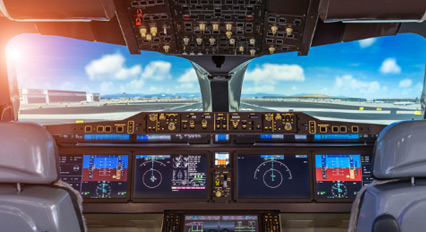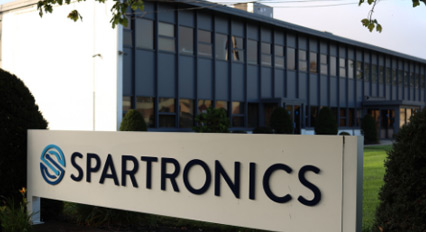Exploring Deep Space: From the Moon, Mars, and Beyond
“Studying whether there’s life on Mars or studying how the universe began, there’s something magical about pushing back the frontiers of knowledge. That’s something that is almost part of being human, and I’m certain that will continue.”
- Sally Ride, American Astronaut and Physicist
For decades the US has led space exploration with American astronauts being the first to land on the moon. Along with this achievement, NASA experienced other firsts. For instance, the agency sent a spacecraft to be the first to fly by Saturn, Uranus, and Neptune. Additionally, NASA was the first to orbit Jupiter, the first to land on an asteroid, and the first to land on Titan, the largest moon of Saturn. These and countless other firsts have solidified the United States as the bona fide leader in space.
Since the end of the Apollo program, though, no human spaceflights have been beyond low earth orbit (LEO). The area past LEO is considered “deep space”— the vast, unexplored region of space that extends beyond our Moon, to Mars, and across our solar system. It’s in deep space where famous science fiction novels and movies, such as The Martian, have taken place. And its deep space where future generations will strive to expand humanity’s footprint.
Earth to Moon, Moon to Mars
The late Sally Ride was certain that mankind would continue to push “the frontiers of knowledge,” and she was right. The Artemis missions, an ambitious NASA earth to Moon, Moon to Mars plan, is a testament to this. While the Artemis space missions are mainly focused on lunar exploration, NASA's long-term goals are even more enterprising from a deep space perspective. Using the technology and research developed during the Artemis spaceflights, NASA intends to launch a future crewed mission to Mars. This daring NASA Moon to Mars deep space plan involves building a new space station in lunar orbit and, eventually, a habitable Moon base.
Understanding the future of Artemis is to understand the future of deep space exploration. There are five stages of the Artemis missions:
-
Artemis 1 will launch no sooner than October 2022 (postponed from August 29, September 3, and September 26) and feature an un-crewed test flight around and beyond the Moon.
-
Artemis 2 will take humans the farthest they’ve ever been in space with a crewed flight beyond the Moon.
-
Artemis 3 will land the first female astronaut and first astronaut of color on the Moon to spend a week performing scientific studies on the lunar surface.
-
Artemis 4 will launch four astronauts on a Space Launch System rocket and Orion, the Multi-Purpose Crew Vehicle (MPCV), to the Gateway Space Station.
-
Artemis 5 will launch four astronauts on a Space Launch System rocket and Orion to the south pole of the Moon. In addition, Artemis 5 will also deliver two new elements to the Gateway Space Station.
The Journey to Mars
In 2021, NASA landed the Perseverance rover on Mars. Its mission is to seek signs of life, and collect rocks and soil samples. Subsequent NASA missions would send a spacecraft to Mars to collect these sealed samples from the surface and return them to Earth for in-depth analysis. The Mars 2020 Perseverance mission is part of NASA’s Moon to Mars exploration approach, which includes the previously mentioned Artemis missions to the Moon that will help prepare for the first human exploration mission to the Red Planet, which is estimated to happen in the 2030s.
At the Johnson Space Center and other NASA Centers, high level mission objectives for future human Mars missions are translated into specific surface systems and concepts of operations. NASA, for example, has embarked on an approach that will allow human crews to live and work productively on Mars for extended periods of time and gradually become independent of support from Earth. This requires not only an understanding of the Mars mission requirements but also constraints imposed by the Martian environment and the “known unknowns” that must be investigated and incorporated into an overall approach to pioneering on the surface of Mars.
According to NASA, mission success through all stages of the journey to Mars relies on the integration of science and engineering into all aspects of human exploration. Mission relevant environments are key to testing a wide range of technologies, tools, and techniques in addition to training the astronaut and ground operations crews in immersive environments.
Additionally, achieving early integration of science, engineering, system operations, and prototype testing in a mission relevant environment will greatly increase the mission returns, reduce the risks, and improve the affordability of deep-space missions. This includes bio-medical systems, astronaut health and performance, mission operations concepts, communications, field science, robotics, and much more.
Many companies that aren’t household names play a hand in helping mankind push the boundaries of space. Spartronics, a contract manufacturer of deep space solutions with IPC-J-STD-001GS Space Addendum certification, has collaborated with their customer Aerojet Rocketdyne to manufacture a component within the Orion space craft.
“It’s exciting to play a part in the Artemis missions with our work on the Orion MPCV,” said Program Manager, Jeff Kooyman. “Ultimately, with Artemis 2-5, we’re proud to be doing our part that takes a big leap into learning more about deep space exploration. Our team is helping make the science fiction of deep space exploration become a reality.”
For more information about how Spartronics can deliver deep space solutions please visit https://www.spartronics.com/markets/space.






